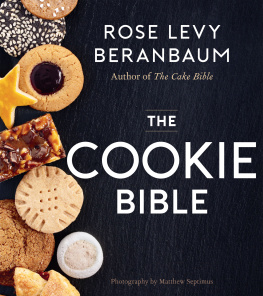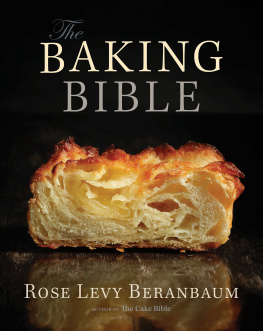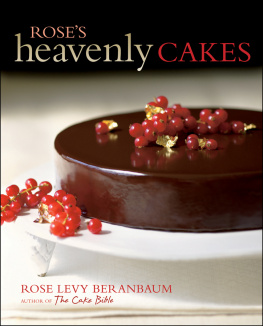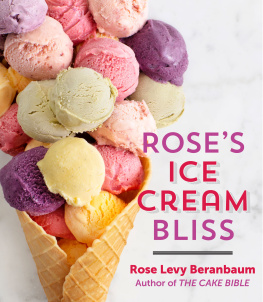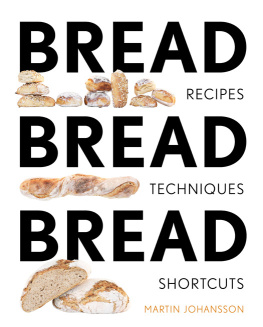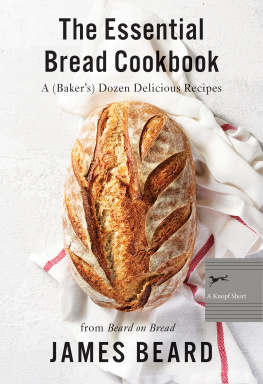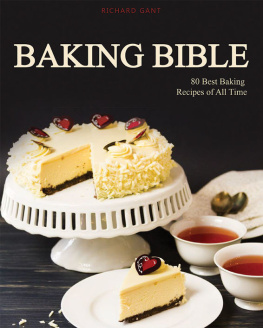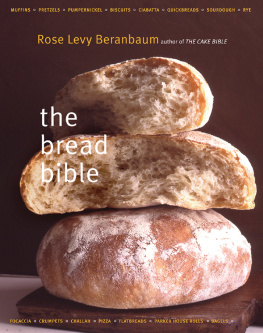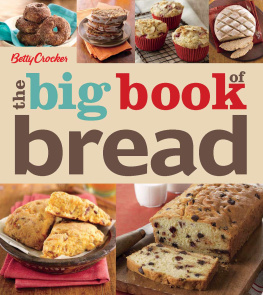Rose Levy Beranbaum
the
bread
bible
photographs by gentl & hyers / edge
illustrations by alan witschonke
foreword by michael batterberry
W. W. Norton & Company
New York London
To my paratrooper father, Robert Maxwell Levy, who gave me
his wings, the courage to fly, and the freedom to dream.
For the generous bread bakers who shared their recipes with
me and bread bakers everywhere.
To the memory of Lionel Poilne, one of the greatest bread
bakers of all time.

Contents
> Before you follow a link, please bookmark your page.
> The Ingredients and Dough Percentage charts are treated as images. Please enlarge for greater readability.

by Michael Batterberry
Founding Editor of Food Arts and Food & Wine magazines
IF CIVILIZATION, AS IS GENERALLY ACCEPTED, WAS BORN OF THE FIRST settled riverbank farms, bread made from harvested grains may well have been its first, and most profound, culinary expression. Millennia ago, bread became synonymous with the absolutely essential. In ancient Egypt, the word for bread meant life, the force of which still shows remarkable staying power, according to the scholarly English food writer Jane Grigson, who, roaming widely in the groves of academe, observed that her scattered archaeologist friends all gave place of honor at their tables to small Near Eastern flatbreads, edible talismans keeping them in day-to-day physical touch with earliest recorded times. Over the centuries, breads kinship with the sacred continued to grow: the sacramental bread and wine of the Christian communion service; the Passover matzoh, unleavened flatbread to ceremoniously commemorate the Jewish Exodus; the Puritans white bread of God, symbolizing the purity of their Lord. Parenthetically, in feudal connotation, the titles Lord and Lady signified the provider and the doler-out of bread, respectively.
Seen from these perspectives, the title of Rose Levy Beranbaums invaluable new book, The Bread Bible, seems hardly a stretch. If civilization were to fall, this volume could be used as an appropriate tool to help jump-start it.
When Rose decides to delve into a subject, as devoted readers will readily swear on stacks of her earlier The Cake Bible, she immerses herself like an oceanographer descending in a bathysphere to probe the darkest deeps. Personal experience confirms this. After mutually agreeing that Rose would write for Food Arts magazine a comprehensive study, of interest to professional chefs, on the topic of sugars, more numerous, she said, than we imagined, she resurfaced many months later with a text so exhaustively researched, so scrupulously tested, that it went on to win two coveted food journalism awards, one American, the other global, the following year.
As an elementary human need, bread runs a close third to air and water. Back in the 1970s in New York, a French diplomat once described to me over dinner his experiences in a German POW camp during World War II. The shortage of food was acute, and to keep up morale, he and his captive fellow officers, Frenchmen to the genetically coded core, entertained each other with the minute details of sumptuous prewar cuisine they had partaken of back home. As time wore on, engulfing hunger led them to reminisce about simpler and simpler fare, homey family dishes, beloved childhood treats, until, at the famished last, to stave off despair, the only thing they cared to deliberate narrowed to the subtle nuances of bread and the arguable superiority of its variable scent, crust, crumb, flavor, even its sound.
Had she been alive then, Rose, with her limitless supply of bread tales, could have nightly played Scheherazade to the imprisoned French. Bakers say that the breads song, she writes, is the sound of the crust crackling as it cools, an unbottled genie remark that swiftly conjures up for me an encounter with chef Alain Sailhac, Dean of the French Culinary Institute. Outside a bread baking kitchen classroom, he snatched a warm baguette from a rolling rack, grinned with delight upon pressuring it gently close to his ear, as if testing the merits of an elephantine cigar, and then thrust it at me, urging, Listen, listen!
Bread, that miraculous metamorphosis of flour, water, and yeast, becomes a living thing shortly after the introduction of the yeast, the metabolic action of which is fermentation. Rising bread dough is a warm and companionable being, if you listen to Rose, who, after a couple of decades of pulling loaves from the oven, can still pose the question, Could it be that Im only completely happy now when a bread is happening [the italics are mine] somewhere nearby?
The goal of bread baking, she states succinctly, is to get good volume and a beautiful crust. A born teacher with a dual scientific and artistic bent, she is determined to lead you to this victorious and glorious end. To spare readers taking any avoidable chances, Rose has carved in hearthstone what she declines as The Ten Essential Steps of Making Bread, a canon that entails, aside from mixing, shaping, and baking, the procedures of prefermenting, dividing and preshaping, slashing, glazing, cooling, slicing, and storing.
And thats just for openers. A quotation that I apparently utter with the repetitiveness of a mantra is Escoffiers declaration that the art of cookery is the constant expression of the present. Trust Rose to understand this fully, as she uninterruptedly demonstrates with constant pitch-perfect responses to the craving for technical know-how of todays younger generations. Throughout The Bread Bible, she follows up recipe procedures with expository passages beneath the heading Understanding. A fragmentary example: allowing the batter to rest enables the flour to absorb the liquid evenly, as in the case of her Yorkshire Popovers, which she confesses to have been perfecting for fifteen years. Further amplification comes in the form of bulleted Pointers for Success, i.e., helpful hints typified by this one for producing flawless Soft Golden Potato Bread: If not using the dry milk, you can replace the water with 1/2 cup plus 1 tablespoon of milk, preferably nonfat, scalded (brought to just under the boiling point) and cooled to lukewarm.
Elsewhere she drops random tips with the profligacy of Johnny Appleseed. If, for example, you dont possess a piping bag for loose muffin dough, simply scrape it into a gallon-size heavy-duty Ziploc bag, zip, and snip off the tip of a lower corner. An avid runner in private life, shell even happily put you through the paces of home-curing olives for olive bread, should you care to go those extra ten miles.
Yet another boon is that the author is never shy about recommending specific brand names, often with sourcing information, that have passed her rigorous testing muster, be it an electric mixer, household flour mill, baking pan, frozen Maine blueberry, or freshest-tasting extract.
The planet-circling sources of some of her recipes provide further evidence of her attunement with Escoffiers dictum. Present-day bread bakers, even if bonded for life to soulfully comforting treasures hoarded in their grandmothers recipe files, simultaneously exhibit an insatiably far-ranging appetite, as well as a sophisticated connoisseurship, for the best the world has to offer. An inveterate traveler who makes each trip a Mount McKinley tasting expedition (weve seen her in softly smiling, gently spoken, all-devouring action), Rose has compiled in this landmark volume recipes of her own invention, along with others gathered from a pantheon of some of the worlds most talented, dedicated, and skillful bakers of everything from traditional hearth breads to newly created bread based desserts.
Next page

